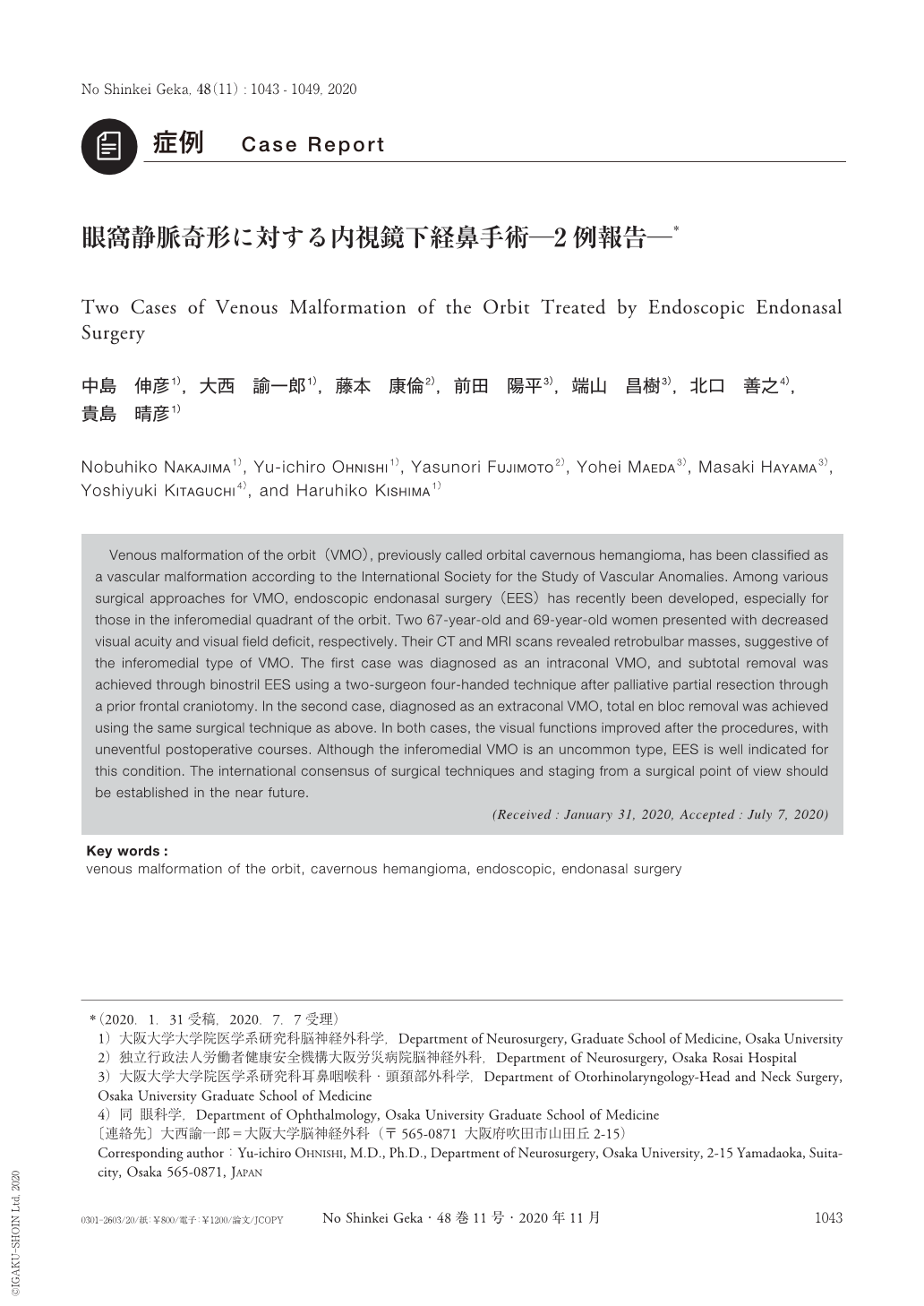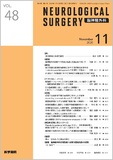Japanese
English
- 有料閲覧
- Abstract 文献概要
- 1ページ目 Look Inside
- 参考文献 Reference
Ⅰ.はじめに
従来,海綿状血管腫(cavernous hemangioma)と称されてきた疾患は,病理学的には血管腫瘍ではなく静脈成分を主体とした低流速の血管形成異常である.これまで本疾患に対してはさまざまな名称が用いられ混乱がみられたが,最近,International Society for the Study of Vascular Anomalies(ISSVA)分類に基づき血管奇形(vascular malformation)の一種として静脈奇形(venous malformation)と診断されるようになってきている2,6,23).本稿ではvenous malformation(VM)の名称に統一し,われわれが経験した内視鏡下経鼻手術(endoscopic endonasal surgery:EES)を行った下内側型眼窩静脈奇形(venous malformation of the orbit:VMO)の2症例について,手術方法と工夫について述べる.
Venous malformation of the orbit(VMO), previously called orbital cavernous hemangioma, has been classified as a vascular malformation according to the International Society for the Study of Vascular Anomalies. Among various surgical approaches for VMO, endoscopic endonasal surgery(EES)has recently been developed, especially for those in the inferomedial quadrant of the orbit. Two 67-year-old and 69-year-old women presented with decreased visual acuity and visual field deficit, respectively. Their CT and MRI scans revealed retrobulbar masses, suggestive of the inferomedial type of VMO. The first case was diagnosed as an intraconal VMO, and subtotal removal was achieved through binostril EES using a two-surgeon four-handed technique after palliative partial resection through a prior frontal craniotomy. In the second case, diagnosed as an extraconal VMO, total en bloc removal was achieved using the same surgical technique as above. In both cases, the visual functions improved after the procedures, with uneventful postoperative courses. Although the inferomedial VMO is an uncommon type, EES is well indicated for this condition. The international consensus of surgical techniques and staging from a surgical point of view should be established in the near future.

Copyright © 2020, Igaku-Shoin Ltd. All rights reserved.


